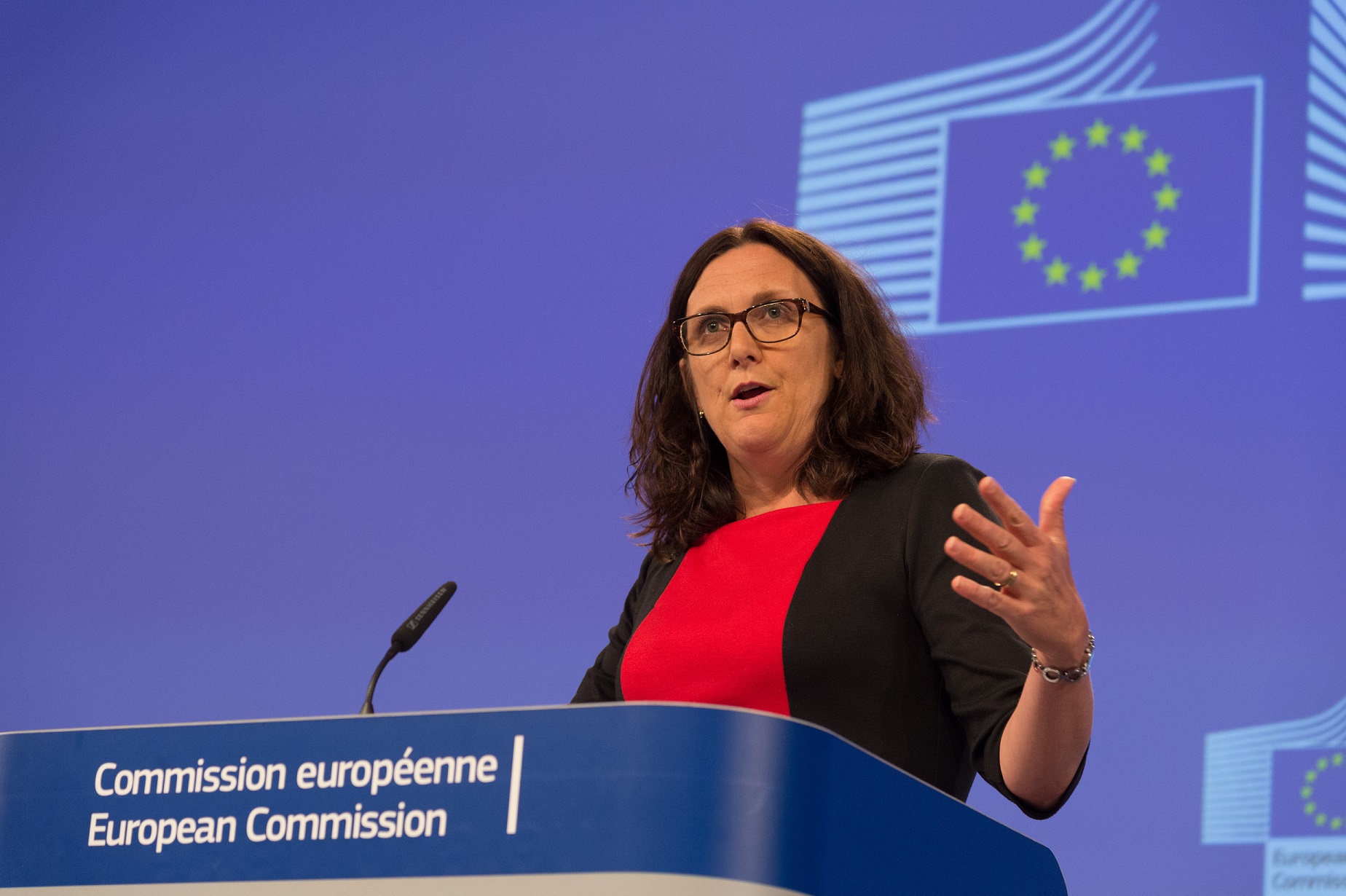
On October 14th, the European Commission has unveiled its new trade strategy, Commissioner Malmström’s latest effort to overcome the T-TIP impasse and relaunch EU trade. The text outlines several commitments that the Commission shall undertake to promote the Union commercial capability, focusing both on how to manage it and where to aim it.
At a first glance, the documents itself appears to come in support of the Trans-Atlantic Trade and Investment Partnership, as it reaffirms several of its key principles. On the one hand, there is an explicit reference to the need of a holistic approach when negotiating commercial agreements, combining lower tariff and services liberalisation. Furthermore, the issue of regulatory cooperation – and consequently investment protection – is widely tackled in the text. The former needs to be put in place in order to avoid any sort of disguised protectionism through the introduction of non-tariff barriers; in this regard, an investment protection system is deemed necessary to safeguard the interests of European enterprises. The paper effectively endorses the Investment Court System, recently proposed by the Commission as a better version of the ISDS.
In addition to the aforementioned parts, the strategy tries to address many of the concerns that animate a widespread opposition to the current EU trade policy, including the defence of intellectual property rights, allowing greater transparency in the negotiations of new agreements, guaranteeing consumer protection and safety standards. Furthermore, several paragraphs of the text deal with the issue of using trade along foreign policy, to promote sustainable development and human rights.
The second part of the strategy outlines the concrete objectives of the European Union in terms of free trade agreements. Both T-TIP and CETA are (briefly) mentioned, with only the latter having some indication regarding its time table – it should be expected for submission to Council and Parliament in early 2016.
Within the paper, there is a great focus on Asia, as the U.S. sponsored Trans-Pacific Partnership pushed the EU to catch up in the region. With the EU-Vietnam agreement already finalised, concluding the one with Japan is a strategic priority. Nonetheless, negotiations with many other Asian countries are stuck in a diplomatic limbo, with a generic commitment to resume them in a fashionable time. Such is the situation of the agreements with Malaysia, Thailand, Myanmar as well as with Indonesia, and the Philippines – both vaguely mentioned just as potential future candidates for an agreement. China is part of the discussion as well, though mainly as far as investment projects are involved – especially its new Silk Road; anything else is off the table.
While the rest of the list goes on naming several negotiations with scarce possibilities of being revived in the near future (i.e. India and Mercosur), there is an important reference to both Australia and New Zealand, as the Commission plans to request the authorisation to start negotiating a free trade agreement with them. Lastly, it is worth noticing the presence of Iran on the list of potential candidates, though any agreement would require the country’s accession to the WTO beforehand.
The strategy has been presented and Commissioner Malmström has unveiled her intentions regarding the direction of EU trade policy for these next years. The first real test to this plan will be the submission of CETA to the European Parliament next year and a potentially long ratification that could follow through. A success could jumpstart many other agreements, giving also new momentum to T-TIP; a failure would require a major overhaul of this new approach to trade policy, at risk of slowing the whole process for years to come.



